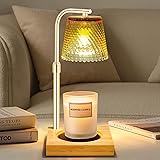Are you considering a home refresh in the near future, perhaps leaning towards the familiar comfort of beige and white for a “timeless classic” feel? If so, you might be surprised by the groundbreaking shifts on the horizon for interior design. As the video above reveals, we’re on the cusp of a design revolution, moving beyond the safe and predictable to embrace more sophisticated, personality-driven spaces. The year 2026 interior design trends are not just fleeting fads; they represent fundamental changes in how we approach our living environments, urging us to make bolder, more decisive moves.
The expert insights from the video highlight what trend forecasters are calling the “death of safe design.” It’s an exciting time for homeowners looking to inject fresh life into their spaces, transforming them from merely functional to truly extraordinary. Let’s delve deeper into these transformative 2026 interior design trends, offering practical ways you can start incorporating them into your home today.
Embracing the New Neutrals: Beyond Beige and White
For decades, white, beige, and gray have reigned supreme as the quintessential neutral colors, celebrated for their versatility and perceived timelessness. However, the landscape of interior design is shifting dramatically. The biggest change coming to your home for 2026 is the redefinition of what a “neutral” truly means. We are seeing a powerful movement towards the “new neutrals” – a richer, more complex palette that still provides a grounding base for your design but with far more depth and character.
These new neutrals venture into territory previously reserved for accent colors. Imagine deep, beautiful greens, warm, dark browns, and even the inviting glow of mustard or ocher yellows. As the video speaker notes, these colors, while sometimes found in older, well-maintained spaces, are making a significant comeback, redefined as foundational elements rather than mere embellishments.
Industry Insights on Color Evolution
- Sherwin Williams’ Choice: For 2026, Sherwin Williams has notably selected Universal Khaki as its color of the year. This isn’t your grandmother’s beige; it’s a “non-boring beige” that signals a clear move towards more nuanced, earthy tones.
- Forbes’ Findings: Even publications like Forbes Magazine, known for their rigorous fact-checking, have observed paint companies increasingly embracing shades such as earthy ocher and deep dark brown. This widespread adoption by major industry players underscores the permanence of this shift.
- HGTV Home’s Perspective: Ashley Banbury from HGTV Home further explains this evolution, stating, “We’ve continued to see a shift away from cooler grays and towards warmer, sandy neutrals that feel more approachable, lived-in, and sophisticated.” This perfectly encapsulates the desire for homes that feel both elegant and inviting.
- NKBA’s Survey: A significant survey by the National Kitchen and Bath Association (NKBA) of design professionals supports this trend. A remarkable 86% of these experts predict a definitive shift towards deeper, more complex neutral color palettes within the next one to two years.
Incorporating New Neutrals into Your Space
Ready to update your color scheme? You don’t need to overhaul your entire home at once. Start with a “baby step.” Replace just one traditional neutral in a room with a more vibrant, yet still grounding, option. Consider a rich forest green accent wall, or perhaps a deep chocolate brown in a cozy dining room or office. These colors inherently ground a space, providing an enveloping warmth.
Moreover, these deep, complex neutrals pair beautifully with natural materials. Think brass accents that gleam against a dark green wall, or various shades of wood – from light oak to deep walnut – complementing a warm brown backdrop. This combination creates a sophisticated, layered look that feels both modern and timeless.
Rustic Modern: Blending Raw Charm with Sleek Lines
Once you’ve started exploring new neutrals, the next step towards a sophisticated, designer look involves mastering the art of mixing textures and styles. If you’ve ever felt torn between a cozy, lived-in, rustic vibe and a sleek, modern aesthetic, then the defining design style for 2026, “rustic modern,” is tailor-made for you. It’s the perfect synthesis of comfort and sophistication.
Rustic modern design expertly bridges the gap between raw, organic textures and clean, sculptural forms. It creates spaces that are incredibly inviting without sacrificing an ounce of elegance. Imagine the character of natural wood or stone meeting the refined polish of contemporary metals or lacquered finishes. This dynamic interplay prevents a room from feeling either too stark and cold or too cluttered and dated.
Elements of Rustic Modern Style
To achieve this sought-after aesthetic, focus on contrasting elements. Here’s how:
- Texture Contrast: Pair a leathered stone countertop or a rough-hewn wooden beam with sleek, polished metal fixtures. The tactile difference creates visual interest and depth.
- Material Fusion: Combine robust, natural wood furniture with polished surfaces, such as a glossy stone coffee table or a lacquered credenza.
- Color Harmony: Weave in the earthy new neutrals we discussed earlier alongside deeper, more complex tones. For instance, a deep green wall can highlight the natural grains of a live-edge wood table.
Picture a modern kitchen island with its crisp lines, offset by bar stools crafted from rough wood or featuring a vintage, textured finish. Or visualize a contemporary sofa paired with a beautiful live-edge coffee table, a popular choice that instantly grounds the modern piece with organic charm. The goal is to maintain those clean, modern lines while strategically incorporating natural stone, reclaimed wood, and other organic elements.
Furthermore, rustic modern design is a wonderful canvas for personal expression. Integrate family heirlooms or unique finds from your travels – a hand-carved piece, a textured throw, or a unique antique – alongside your more modern furnishings. These curated items add personality and tell a story, making your home feel truly unique and collected.
Statement Furniture: Oversized, Sculptural, and Dramatic
Beyond color palettes and material combinations, the very furniture within your home is undergoing a dramatic transformation for 2026. Forget furniture that merely blends into the background; the future is all about pieces that demand attention, creating an “OMG moment” in any room. This means embracing oversized, sculptural, and beautifully rounded-edge furniture.
Oversized seating, in particular, is poised to dominate interior design. Large sofas and chairs will transcend their functional roles to become sculptural focal points. While comfort remains paramount, these pieces will be chosen for their aesthetic impact, turning a simple seating arrangement into a work of art.
The Allure of Curves and Volume
The visual appeal of sculptural, rounded furniture is undeniable. As The Spruce explains, the “swooping soft shapes” are inherently pleasing to the eye. They soften a space, making a room feel more cozy and welcoming. Rounded corners on sofas, along with architectural elements like arched doorways, contribute to a relaxed, inviting atmosphere, breaking away from the harsh angles of traditional minimalist designs.
To integrate this trend, think beyond conventional furniture sizes and shapes. Consider a large, curved sectional as the centerpiece of your living room. Alternatively, swap out angular dining chairs for those with softer, more graceful curves. The key is to select one boldly sized or uniquely shaped piece as the focal point, allowing it to stand out while other elements remain more restrained, ensuring your eye has a clear landing spot.
If a grand, oversized piece isn’t feasible, you can still embrace the trend with smaller, curved accents. Round ottomans, curved coffee tables, and even the architectural feature of an arched doorway can introduce this softer, more dramatic aesthetic without a complete overhaul. This thoughtful integration of curves adds an unexpected touch of sophistication and individuality to your home.
Bold Monochromatic Interiors: Sophistication in a Single Hue
Once you’ve embraced statement furniture, it’s time to truly elevate your design confidence with a trend that separates the timid from the truly adventurous: bold monochromatic interiors. If you associate monochromatic rooms with boring, all-beige or all-gray spaces, prepare to have your perception completely transformed. The 2026 version of monochromatic design is anything but dull; it’s about pushing the boundaries within a single color family to create dramatic and incredibly sophisticated environments.
The genius of this approach lies in its ability to generate contrast and visual interest not through disparate colors, but through varying shades, textures, and materials within one dominant hue. Imagine a room bathed in shades of blue, from the deepest navy velvet sofa to shimmering powder blue silk curtains, accented by silvery-gray metallic blue decor pieces. Each element, though part of the same color family, contributes a unique layer, creating depth, drama, and a cohesive, high-end feel.
Mastering the Monochromatic Look
Achieving this sophisticated style at home requires careful attention to detail:
- Choose Your Color: Select a color family you genuinely love and want to live with. This will be the foundation of your design.
- Explore Its Range: Investigate the full spectrum of shades within that color. Don’t just pick one; look for light, medium, and dark variations.
- Layer Textures and Materials: This is crucial. A navy velvet sofa provides a rich, tactile experience. Powder blue silk curtains add luminosity and softness. Steel blue metallic accents introduce a modern sheen. Different textures catch light differently, adding immense visual interest.
A prime example of this trend in action comes from designer Emily Henderson, who beautifully transformed her brother’s living room using various shades of green. By incorporating dark greens, lighter greens on the walls, and a range of green tones across different elements, she created a stunningly cohesive and luxurious space that showcased the power of a well-executed monochromatic palette.
This approach allows a minimalist layout to retain its clean lines while simultaneously gaining significant visual appeal. It’s about leveraging the subtleties of color and material to craft a room that feels both serene and spectacularly stylish.
Electric Saturation: Daring with Vibrant Hues
For those ready to make the ultimate rejection of “playing it safe,” the most shocking and exhilarating 2026 interior design trend is “electric saturation.” This is where sophisticated homes embrace truly bright, vibrant, and even controversial colors. Think electric blue kitchen cabinets, vibrant lime green furniture, or even a hot pink dining room – not as accents, but as dominant, saturating elements within a space. This bold shift is appearing in high-end design magazines and among top interior designers, signaling a major move towards personality-driven environments.
This trend challenges the notion that bright colors have no place in elegant homes. Instead, it positions them as statements of individuality and confidence. As designer Jacob Steer observes, this is a “shift towards bold colors and a maximalist approach that’s driven by showcasing our personalities.” It’s about creating spaces that reflect who you are, rather than conforming to a universal, often muted, ideal.
Executing Electric Saturation Flawlessly
The key to making electric saturation feel sophisticated, not chaotic, lies in meticulous execution and thoughtful pairing:
- Commitment is Key: This trend requires conviction. Choose your vibrant color and commit to it in a significant way, whether it’s an entire wall, a set of cabinets, or a large piece of furniture.
- Undertone Awareness: Professional colorists carefully mix these electric hues with attention to their undertones. Pairing a cool electric blue with warmer brass handles, or a hot pink dining room with neutral furniture, creates balance and prevents the room from feeling overwhelming.
- Natural Counterpoints: To provide contrast and grounding, pair electric colors with natural wood tones or other subdued elements. An electric blue kitchen island can be spectacular when juxtaposed with natural wood flooring and warm brass hardware. Similarly, a hot pink dining room can be elegantly tempered with sophisticated lighting and neutral-toned dining chairs.
This trend is a powerful statement, celebrating individual taste and a rejection of the purely neutral-focused design of the past. It’s about creating an environment that sparks joy and reflects the vibrant spirit of those who live there.
Outgoing Trends: What to Avoid in 2026
As we embrace the future of design, it’s equally important to know which trends are on their way out. Avoiding these will prevent you from wasting money and ensure your home stays fresh and current for 2026 interior design trends. Here are three styles that are definitely being phased out next year:
1. Accent Walls (Especially Slatted Wood)
While a simple painted accent wall has been slowly fading, the more elaborate “feature walls” are also losing their appeal. Specifically, slatted wood paneling, which saw a surge in popularity, is now considered on its way out. While it offers texture, its widespread use and distinct aesthetic make it prone to dating quickly. Design is moving towards more integrated and subtle forms of architectural interest rather than a single focal wall.
2. Grand Millennial Style
This trend, characterized by an ode to maximalism with “floral on floral” designs, is definitively being phased out. While it aimed for a cozy, eclectic look, it often resulted in clashing patterns, an overwhelming abundance of florals (floral curtains, pillows, bedspreads all in different floral patterns), and a sense of visual clutter. The move is towards a more curated and thoughtful maximalism, or a streamlined elegance.
3. Stark Minimalism
While clean lines and ultra-modern sleek surfaces will always have their place, the “stark minimalism” that leaves a room feeling cold and uninviting is no longer desirable. Designers and homeowners are seeking warmth and comfort. The trend is evolving into “warm minimalism,” which incorporates more texture, natural materials like various wood tones, and an overall softer, more approachable feel. Rooms should feel lived-in and cozy, not bare and sterile.











